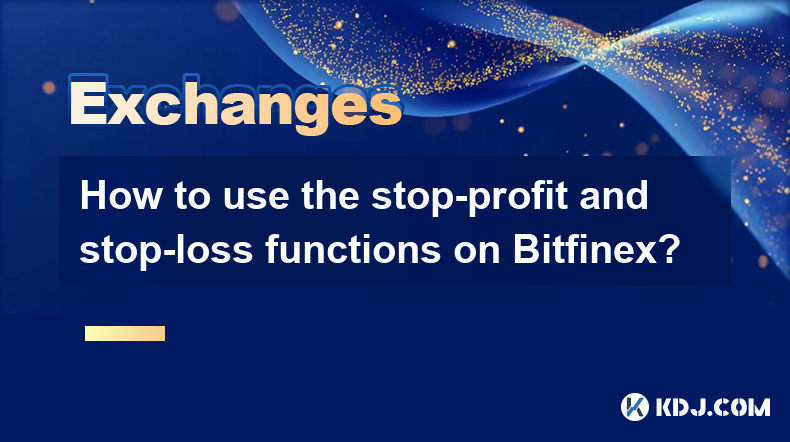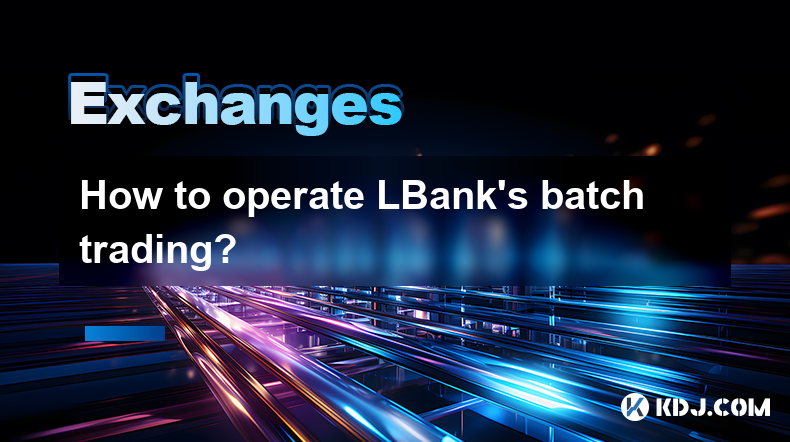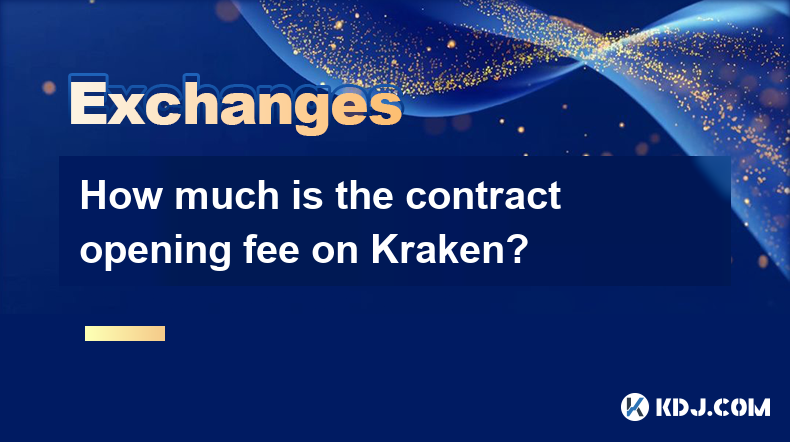-
 Bitcoin
Bitcoin $92,680.4827
-1.06% -
 Ethereum
Ethereum $1,752.0353
-3.50% -
 Tether USDt
Tether USDt $0.9999
-0.04% -
 XRP
XRP $2.1604
-4.74% -
 BNB
BNB $597.8192
-2.41% -
 Solana
Solana $147.9772
-2.60% -
 USDC
USDC $0.9997
-0.03% -
 Dogecoin
Dogecoin $0.1737
-5.16% -
 Cardano
Cardano $0.6892
-2.10% -
 TRON
TRON $0.2446
-0.60% -
 Sui
Sui $2.9979
3.29% -
 Chainlink
Chainlink $14.4341
-3.88% -
 Avalanche
Avalanche $21.9989
-3.49% -
 UNUS SED LEO
UNUS SED LEO $9.2400
1.80% -
 Stellar
Stellar $0.2656
-2.51% -
 Toncoin
Toncoin $3.1060
-0.80% -
 Shiba Inu
Shiba Inu $0.0...01313
-4.02% -
 Hedera
Hedera $0.1788
-3.78% -
 Bitcoin Cash
Bitcoin Cash $345.5624
-3.92% -
 Polkadot
Polkadot $3.9957
-3.28% -
 Litecoin
Litecoin $81.6247
-3.40% -
 Hyperliquid
Hyperliquid $17.8730
-6.22% -
 Dai
Dai $0.9999
0.00% -
 Bitget Token
Bitget Token $4.3985
-4.10% -
 Ethena USDe
Ethena USDe $0.9993
-0.02% -
 Pi
Pi $0.6479
-2.82% -
 Monero
Monero $223.6877
-2.21% -
 Uniswap
Uniswap $5.7553
-4.88% -
 Pepe
Pepe $0.0...08521
-6.96% -
 Aptos
Aptos $5.2919
-1.64%
How to use the stop-profit and stop-loss functions on Bitfinex?
Use Bitfinex's stop-profit and stop-loss orders to manage trading risk and secure profits; set trigger and order prices carefully to automate your strategy effectively.
Apr 24, 2025 at 01:22 pm

Using the stop-profit and stop-loss functions on Bitfinex can be an effective way to manage your trading risk and secure profits. These tools are essential for traders looking to automate their trading strategies and protect their investments from significant losses. In this article, we will guide you through the process of setting up and using stop-profit and stop-loss orders on Bitfinex, ensuring you have a comprehensive understanding of how to utilize these features effectively.
Understanding Stop-Profit and Stop-Loss Orders
Before diving into the specifics of setting up these orders on Bitfinex, it's important to understand what stop-profit and stop-loss orders are. A stop-profit order, also known as a take-profit order, is designed to automatically sell a cryptocurrency when it reaches a certain price, allowing you to lock in profits. A stop-loss order, on the other hand, is set to sell a cryptocurrency when its price falls to a predetermined level, helping you to limit potential losses.
Accessing the Trading Interface on Bitfinex
To begin setting up stop-profit and stop-loss orders on Bitfinex, you need to access the trading interface. Follow these steps:
- Log into your Bitfinex account. If you don't have an account, you'll need to register and complete the necessary verification processes.
- Navigate to the trading section. Once logged in, click on the "Trading" tab at the top of the page.
- Select the cryptocurrency pair you want to trade. For example, if you want to trade Bitcoin against the US Dollar, select the BTC/USD pair.
Setting Up a Stop-Profit Order on Bitfinex
To set up a stop-profit order on Bitfinex, follow these detailed steps:
- Choose the order type. In the order form on the right side of the trading interface, click on "Order Type" and select "Stop" from the dropdown menu.
- Set the trigger price. This is the price at which you want the stop-profit order to be triggered. Enter this price in the "Trigger Price" field. For example, if you bought Bitcoin at $30,000 and want to sell it when it reaches $35,000, enter $35,000 as the trigger price.
- Set the order price. This is the price at which your order will be executed once the trigger price is reached. In the "Order Price" field, enter the desired selling price. It's common to set this slightly below the trigger price to ensure the order is executed promptly.
- Specify the amount. Enter the amount of cryptocurrency you want to sell in the "Amount" field.
- Review and submit the order. Double-check all the details, then click "Submit Order" to place your stop-profit order.
Setting Up a Stop-Loss Order on Bitfinex
Setting up a stop-loss order follows a similar process but with a few key differences:
- Choose the order type. As with the stop-profit order, select "Stop" from the "Order Type" dropdown menu.
- Set the trigger price. This time, the trigger price should be set below your purchase price. For example, if you bought Bitcoin at $30,000 and want to sell it if it drops to $28,000, enter $28,000 as the trigger price.
- Set the order price. Enter the price at which you want the order to be executed once the trigger price is hit. Similar to the stop-profit order, setting this slightly below the trigger price can help ensure execution.
- Specify the amount. Enter the amount of cryptocurrency you want to sell in the "Amount" field.
- Review and submit the order. Verify all the details and click "Submit Order" to place your stop-loss order.
Managing and Monitoring Your Orders
Once your stop-profit and stop-loss orders are placed, it's crucial to monitor them and make adjustments as necessary. Bitfinex provides several tools to help you manage your orders effectively:
- View your active orders. Go to the "Orders" tab on the trading interface to see a list of all your active orders, including stop-profit and stop-loss orders.
- Modify or cancel orders. If market conditions change or you want to adjust your strategy, you can modify or cancel your orders from the "Orders" tab. Simply click on the order you want to change, and you'll have the option to edit the trigger price, order price, or amount, or cancel the order entirely.
- Use the order history. The "Order History" tab allows you to review past orders, which can be helpful for analyzing your trading performance and refining your strategies.
Common Pitfalls and Best Practices
When using stop-profit and stop-loss orders on Bitfinex, it's important to be aware of common pitfalls and follow best practices to maximize their effectiveness:
- Avoid setting stop prices too close to the current market price. This can result in your orders being triggered by normal market volatility, potentially leading to missed opportunities or unnecessary losses.
- Regularly review and adjust your orders. Market conditions can change rapidly, so it's essential to keep your stop-profit and stop-loss orders up to date with your current trading strategy.
- Understand the risks. While stop-profit and stop-loss orders can help manage risk, they are not foolproof. In highly volatile markets, there's a risk of slippage, where the order is executed at a different price than intended.
Frequently Asked Questions
Q: Can I set multiple stop-profit and stop-loss orders for the same cryptocurrency pair on Bitfinex?
A: Yes, you can set multiple stop-profit and stop-loss orders for the same cryptocurrency pair. This allows you to implement different strategies or hedge your positions effectively.
Q: How does Bitfinex handle stop orders during high volatility?
A: During periods of high volatility, Bitfinex may experience delays in order execution due to increased trading volume. It's important to be aware of this risk and consider setting your trigger and order prices accordingly to account for potential slippage.
Q: Can I use stop-profit and stop-loss orders for margin trading on Bitfinex?
A: Yes, stop-profit and stop-loss orders can be used for margin trading on Bitfinex. However, you should be cautious as margin trading involves higher risks, and the use of these orders can help manage those risks but does not eliminate them.
Q: Are there any fees associated with using stop-profit and stop-loss orders on Bitfinex?
A: Bitfinex does not charge additional fees specifically for using stop-profit and stop-loss orders. However, standard trading fees will apply when the orders are executed. Always check the latest fee structure on Bitfinex's website for the most accurate information.
Disclaimer:info@kdj.com
The information provided is not trading advice. kdj.com does not assume any responsibility for any investments made based on the information provided in this article. Cryptocurrencies are highly volatile and it is highly recommended that you invest with caution after thorough research!
If you believe that the content used on this website infringes your copyright, please contact us immediately (info@kdj.com) and we will delete it promptly.
- Spot Bitcoin ETF inflows are at their highest since January 2025.
- 2025-04-24 21:10:12
- Mantle Network Launches MI4, a Institutional-Grade Digital Asset Index Fund Targeting $400M Market Gap
- 2025-04-24 21:10:12
- Infrared Finance Launches Points Program to Incentivize User Engagement Ahead of Token Launch
- 2025-04-24 21:05:12
- The Rise of Cardano (ADA) and Its Potential Impact on Coldware (COLD)
- 2025-04-24 21:05:12
- Bitcoin (BTC) price surges by 9.4% over the last seven days, with a single-day spike of 9.65%
- 2025-04-24 21:00:12
- The 10 Most Valuable Roosevelt Dimes
- 2025-04-24 21:00:12
Related knowledge

Where to view LBank's API documentation?
Apr 24,2025 at 06:21am
LBank is a popular cryptocurrency exchange that provides various services to its users, including trading, staking, and more. One of the essential resources for developers and advanced users is the API documentation, which allows them to interact with the platform programmatically. In this article, we will explore where to view LBank's API documentation...

Which third-party trading robots does Bitfinex support?
Apr 24,2025 at 03:08am
Bitfinex, one of the leading cryptocurrency exchanges, supports a variety of third-party trading robots to enhance the trading experience of its users. These robots automate trading strategies, allowing traders to execute trades more efficiently and potentially increase their profits. In this article, we will explore the different third-party trading ro...

How to operate LBank's batch trading?
Apr 23,2025 at 01:15pm
LBank is a well-known cryptocurrency exchange that offers a variety of trading features to its users, including the option for batch trading. Batch trading allows users to execute multiple trades simultaneously, which can be particularly useful for those looking to manage a diverse portfolio or engage in arbitrage opportunities. In this article, we will...

How much is the contract opening fee on Kraken?
Apr 23,2025 at 03:00pm
When engaging with cryptocurrency exchanges like Kraken, understanding the fee structure is crucial for managing trading costs effectively. One specific fee that traders often inquire about is the contract opening fee. On Kraken, this fee is associated with futures trading, which allows users to speculate on the future price of cryptocurrencies. Let's d...

How to use cross-chain transactions on Kraken?
Apr 23,2025 at 12:50pm
Cross-chain transactions on Kraken allow users to transfer cryptocurrencies between different blockchain networks seamlessly. This feature is particularly useful for traders and investors looking to diversify their portfolios across various blockchains or to take advantage of specific opportunities on different networks. In this article, we will explore...

How to set up sub-account permissions on Bitfinex?
Apr 24,2025 at 03:08pm
Setting up sub-account permissions on Bitfinex is an essential feature for users who need to manage multiple accounts or delegate certain tasks to others. This guide will walk you through the detailed process of configuring sub-account permissions, ensuring you can manage your cryptocurrency activities effectively and securely. Accessing the Sub-Account...

Where to view LBank's API documentation?
Apr 24,2025 at 06:21am
LBank is a popular cryptocurrency exchange that provides various services to its users, including trading, staking, and more. One of the essential resources for developers and advanced users is the API documentation, which allows them to interact with the platform programmatically. In this article, we will explore where to view LBank's API documentation...

Which third-party trading robots does Bitfinex support?
Apr 24,2025 at 03:08am
Bitfinex, one of the leading cryptocurrency exchanges, supports a variety of third-party trading robots to enhance the trading experience of its users. These robots automate trading strategies, allowing traders to execute trades more efficiently and potentially increase their profits. In this article, we will explore the different third-party trading ro...

How to operate LBank's batch trading?
Apr 23,2025 at 01:15pm
LBank is a well-known cryptocurrency exchange that offers a variety of trading features to its users, including the option for batch trading. Batch trading allows users to execute multiple trades simultaneously, which can be particularly useful for those looking to manage a diverse portfolio or engage in arbitrage opportunities. In this article, we will...

How much is the contract opening fee on Kraken?
Apr 23,2025 at 03:00pm
When engaging with cryptocurrency exchanges like Kraken, understanding the fee structure is crucial for managing trading costs effectively. One specific fee that traders often inquire about is the contract opening fee. On Kraken, this fee is associated with futures trading, which allows users to speculate on the future price of cryptocurrencies. Let's d...

How to use cross-chain transactions on Kraken?
Apr 23,2025 at 12:50pm
Cross-chain transactions on Kraken allow users to transfer cryptocurrencies between different blockchain networks seamlessly. This feature is particularly useful for traders and investors looking to diversify their portfolios across various blockchains or to take advantage of specific opportunities on different networks. In this article, we will explore...

How to set up sub-account permissions on Bitfinex?
Apr 24,2025 at 03:08pm
Setting up sub-account permissions on Bitfinex is an essential feature for users who need to manage multiple accounts or delegate certain tasks to others. This guide will walk you through the detailed process of configuring sub-account permissions, ensuring you can manage your cryptocurrency activities effectively and securely. Accessing the Sub-Account...
See all articles























































































